
PRSRT STD U.S. POSTAGE PAID DENVER, CO PERMIT 2882 CONNECTIONS FOR METRO DENVER’S DENTAL PROFESSION Mouth Breathing: What Can Go Wrong? Sound Advice Every Practice Should Hear Cyber Threats Impact the Dental Community It’s Time to Get Comfortable Discussing HPV QTR 4, 2022 VOL 28 • ISSUE 2 RMDC PREVIEW
There are a lot of differences between being a Member of the Trust and just another policy number at a large, commercial carrier. Both give you a policy the Practice Law requires, but that’s where the similarity ends.
Who do I talk to when I have a patient event, claim or question?
The Trust: Local dentists who understand your practice, your business and your needs.
Them: Claims call center (likely in another state). Besides a policy, what do I get when I buy coverage?
The Trust: Personal risk mitigation training, educational programs and an on-call team that ”speak dentist.“

Them: Online support.
Do I have personal input and access to the company?
The Trust: Yes. You are represented by dentists from your geographic area of the state. We understand the practice of dentistry throughout our beautiful state has its own challenges. We give you direct, personal representation to the Trust.
Them: Yes, via their national board.
How much surplus has been returned to dentists in Colorado?
The Trust: Over $2.2M has been distributed back to Colorado dentists as a “return of surplus” (a er all, it’s your Trust, your money).
Them: $0
How long has the company been serving Colorado dentists?
The Trust: We were Established by dentists in 1987. Them: It’s hard to say... they tend to come and go.
Protect your practice. Call the Trust today.
Dr. H. Candace DeLapp 303-357-2604 (Direct) www.tdplt.com
Individual and Group Policies Available.
$0.00 First Year* New Graduates
*some restrictions apply; subject to underwriting approval.
ADS Precise Transitions adsprecise.com 21
Berkley Risk berkleyrisk.com 17
Colorado Dental Association (CDA) cdaonline.org/wellness 8
COPIC Financial Services Group copicfsg.com 5
CTC Associates ctc-associates.com 17
Dente Vita dentevita.com 26
Dentists Professional Liability Trust of Colorado tdplt.com Inside Front Cover
Denver Implant Study Club (DISC) disc.events 5

SAS Transitions sastransitions.com 25
University of Colorado School of Dental Medicine dental.cuanschutz.edu Back Cover
US Bank usbank.com 21
Co-Editors
Amisha Singh, DDS; Allen Vean, DMD
Creative Manager Little Red Swing • littleredswing.com
Managing Editor
Cara Stan
Printing Dilley Printing MDDS STANDING OFFICERS
President Janie Boyesen, DDS, DMSc President-Elect Karen Foster, DDS
Treasurer Susan Kutis, DDS Secretary Bryan Savage, DDS
The Articulator is published quarterly by the Metropolitan Denver Dental Society and distributed to MDDS members as a direct benefit of membership.
Editorial Policy
All statements of opinion and of supposed fact are published under the authority of the authors, including editorials, letters and book reviews. They are not to be accepted as the views and/or opinions of the MDDS.
The Articulator encourages letters to the editor, but reserves the right to edit and publish under the discretion of the editor.
Advertising Policy
MDDS reserves the right, in its sole discretion, to accept or reject advertising in its publications for any reasons including, but not limited to, materials which are offensive, defamatory or contrary to the best interests of MDDS. Advertiser represents and warrants the advertising is original; it does not infringe the copyright, trademark, service mark or proprietary rights of any other person; it does not invade the privacy rights of any person; and it is free from any libel, libelous or defamatory material. Advertiser agrees to indemnify and hold MDDS harmless from and against any breach of this warranty as well as any damages, expenses or costs (including attorney’s fees) arising from any claims of third parties.
Inquiries may be addressed to:
Metropolitan Denver Dental Society 925 Lincoln Street, Unit B Denver, CO 80203 Phone: (303) 488-9700 Fax: (303) 488-0177 mddsdentist.com
©2022 Metropolitan Denver Dental Society. All rights reserved.
2022 • VOLUME 28 • ISSUE 2 3
ADVERTISING DIRECTORY
Member Publication 10 RMDC SPEAKER PREVIEW SERIES 04 A New Holiday Tradition KYLE O’DONNELL, DDS 06 Are We Well? AMISHA SINGH, DDS 09 I am MDDS 22 Treating Adults With Special Health Care Needs SHEILA STILLE, DDS KAREN FOSTER, DDS MS. JOANN LECLAIRE, RDH, MS ARTEMIS KHAZAIE, DDS In this Issue... Mouth Breathing: What Can Go Wrong? Sound Advice Every Practice Should Hear Cyber Threats Impact the Dental Community It’s Time to Get Comfortable Discussing HPV DENVER, COLORADO • JAN 19-21, 2023
A New Holiday Tradition
KYLE O’DONNELL, DDS
I am excited to celebrate this holiday season more than any other time in recent memory. For the first time in three years, I hope to share meals, laughs, gifts and hugs without the haze of uncertainty the pandemic provided for so many of us. Regardless of tradition, this season is special in that we choose to rekindle our connection with loved ones, remember those who are no longer with us and find hope for what the coming year will bring. We have endured more than our fair share these last few years and the thought of a ‘normal’ holiday season sounds extraordinary. To be clear, I am no Clark Griswold, but I do appreciate what this season is all about. Historically, my tradition is to celebrate Thanksgiving with my immediate family, Christmas with my extended family and New Years with my friends. Every year I find this is a time of personal growth and renewal. And this year, I am adding one more celebration to the season.
As the 2023 Rocky Mountain Dental Convention (RMDC) approaches, I think about our dental community and what we have been through ever since 2020. Most of us have embraced a return to normal. Over the course of this past year, our dental community eased restrictions, in-person CE began again and study clubs met. However, many of us also developed a well-intentioned, but an insidious pattern of saying, “I’ll sit this one out, too many people,” or “It’s not worth the risk of exposure.” Little by little, we found the cost of our caution was professional isolation. Unfortunately, isolation accrues interest. Well, those days are finally behind us. I am happy to share our RMDC dental community is stronger and more vibrant than ever and ready to welcome each of you back to RMDC for three days of connection, education, friendship and camaraderie. These are the foundations of RMDC and the foundation of our dental community. In fact, the latest registration data shows we are on pace to meet attendance figures from before the pandemic! I can feel the energy welling up from this community to gather together under that big blue bear. This year, I choose to celebrate my fourth holiday of the season learning and growing with all of you at RMDC.
To kick off the convention on January 19, 2023, motivational speaker Brad Montgomery will encourage all of us to “Embrace Awesomeness” in ourselves and in our teams. He is both funny and inspirational. I’ve had an opportunity to hear him speak before and I found this topic to be particularly well-suited to the challenges we face in dentistry today. After Brad sets the tone for RMDC, we move straight into a collection of world-class speakers in nearly every specialty, who will share insight into the latest topics in dental medicine. I am particularly excited about this year’s speaker lineup and encourage you to register for your lecture of choice before they fill up. When you find a break from lectures, don’t forget to make your way to the Expo Hall. Our vendors make RMDC possible year after year and are eager to show you the latest available products and services. We are also proud to welcome back the electrifying dueling piano group Howl2GO for Friday night! Those who were fortunate enough to get a ticket last year or who have seen their show live in Denver know why we couldn’t wait to sign them up for 2023. Most importantly, I hope you make time to catch up with colleagues you haven’t seen in years, grab a drink with a fellow professional and celebrate each other and this community. MDDS and its dedicated team have been working nonstop to make this year’s convention memorable for all of us.
Visit RMDConline.com to register and for updates as we get closer to the convention. I look forward to seeing you there!
KYLE O’DONNELL, DDS 2023 RMDC CHAIR

MDDSDENTIST.COM 4
“We have endured more than our fair share these last few years and the thought of a ‘normal’ holiday season sounds extraordinary.”
CHAIR MESSAGE




2022 • VOLUME 28 • ISSUE 2 5 We understand the health care industry and can offer you strategic, customized insurance and financial solutions. We’ll work with you to navigate employee benefits, cyber protection, coverage options, and any gaps that need addressing to protect your assets. That’s Value Beyond Coverage. COPICFSG.COM | 800.421.1834 COVERAGE BEYOND SOLUTIONS NATIONAL SPEAKERS / AGD PACE CREDITS / GREAT FORMAT / NEW LECTURES SAVE THE DATE! DISC 2023 Schedule February 16, 2023 - Dr. Julián Conejo, DDS, MSc Title: Highly Esthetic Implant-supported Restorations with CADCAM: An update on the latest materials, workflows and techniques for 2023. April 20, 2023 - Sang J. Lee, DMD, MMSc Title: Fixed implant rehabilitation and implant occlusion June 8, 2023 - Miguel D. Vidal, DMD, MS Title: Selecting the Correct Implant Abutment DesignBeyond Ti-Base REGISTER TODAY! https://disc.events DISC IS POWERED BY DENTUTOPIA Approved PACE Program Provider || FAGD/MAGD Credit Approval does not imply acceptance by state or provincial board of dentistry or AGD endorsement. 1/1/2022 to 12/31/2023 Provider ID# 217950 Continuing education credits are available. (Total of 15.75 hours of AGD PACE credits) September 7, 2023 - Yong-Han Koo, DDS Title: Robotics in Dental Implant Surgery: Safety & Precision October 5, 2023 - Paul Chang, DDS Title: Management & Prevention of Peri-Implant Diseases November 2, 2023 - Aldo Leopardi, BDS, DDS, MS, Prosthodontist Title: “Back to the Future”: a retrospective look at dental implant clinical complications and successes, with a view toward the future. December 7, 2023 - Marcus Blue, DDS Title: Clinical advancements and predictability in bone grafting. sharing and learning with your peers 20 YEARS CELEB R ATING D I S C
Are We Well? A Reflection on
AMISHA SINGH, DDS

It feels like a cliff, a steep and sudden drop off into a fog of melancholy clouds. I have experienced burnout in dentistry, and I never saw it coming, even when I was right on the edge. I thought I was fine. I thought I could manage. I thought I was just busy. But it was a lot more than just the management of daily stress and being overwhelmed. It was a pervasive feeling of sadness and apathy that I just could not shake. It was deep breaths and the brink of sanity in between patients. It was a longing I could not quantify or, at times, even acknowledge. I was losing myself in it.
Burnout is something that is prevalent in our field, regardless of practice modality. The ADA Dentist Health and Well-Being Survey of 2021 stated that 84% of dentists reported feeling burned out at some point in their careers. Burnout is related to depression and anxiety, two other conditions which impact our personal and professional wellness. This same report shows 86% of dentists report moderate to severe occupational stress. Anxiety was the second most prevalent condition noted in this report, impacting 16% of dentists nationally. The Journal of the Canadian Dental Association published an article that stated dentists in North America were at a higher risk for dysthymia, which is defined as “a persistent depressive disorder, mild but long term.” It hit home when I read this definition: “...mild but long term.” It never stopped me from getting out of bed. I still did good dentistry. I still showed up for my patients and my team. I still functioned, but it was a battle on some days, which got more and more frequent. It started out as a dull rumble and grew steadily to a roar inside of me over time.
the Health of the Dental Profession
So many dentists I know allude to this long-lasting, lingering feeling... some say it resembles sadness, others say it feels more like unrest. For some of us, it is still a rumble. For others, it is deafening. We speak about it in hushed corners during networking events and in small circles of safety among dental friends. I have experienced that my dental peers understand it better than my loved ones. They understand this idea of linking your self-worth to patient outcomes and this drive for perfection which becomes a double-edged sword. There is an unspoken bond we share in the dental community and a part of that bond is understanding the pain and challenges we face. We, as an industry, are getting a lot better about discussing it on national stages and on national platforms. In part, this is likely because this feeling is impacting us in masses. It’s changing our relationships with our profession and beyond that, it is changing our relationship with our lives and loved ones. It is changing our relationship with ourselves.
We are recognizing the exceeding toll that illness is taking on our professional and personal lives. Vivek Murthy, the Surgeon General of the US, recently launched a framework for Mental Health and Wellbeing in the Workplace. The World Health Organization moved to change the definition of burnout to better quantify and diagnose it and added it to the ICD-10, International Classification of Diseases Diagnostic Manual. The American Dental Association’s 2021 House of Delegates passed a resolution on wellness which led to the creation of the ADA Wellness Ambassador program, something I am fortunate enough to participate in.
This profession is beautiful, and I consider dentistry to be one of the greatest gifts of my life. I love being a dentist. But I had to listen deeply to
my intuition and make some pretty big changes in my life to be able to find a place in dentistry that filled me up and gave me fulfillment, alignment and bliss. I had to move. That is exactly what pain makes us do.... move. Just like the pain which occurs when resting a hand on a hot stove that sends a signal to move the hand before further damage is caused, I needed to listen to my pain to move into a life that better aligned with my purpose, my goals and my intended legacy. I did not do that alone. Mentors, like Dr. Brett Kessler, asked me probing questions that challenged the limiting beliefs I was harboring. I got a coach, Dr. Laura Brenner, who guided me and equipped me to pull myself out of the darkness. I leaned into my social support system to survive and regain my light.
After having been in a dark place, I promised myself I would never let myself get there again. I was vigilant and I worked habits of wellness into my daily life. But, despite all that, I have gotten close, again traversing that cliff in subsequent chapters of my life. I learned I flutter to the edge of that cliff on autopilot, like a moth to a flame, if I am not careful. I tend to work too hard and too long. I tend not to honor my wellness or my boundaries. I stop listening to my mind and my body. Patients automatically come before my own health. I internalize work stress and fail to extricate my self-worth from my clinical outcomes, my productivity and my professional challenges. And in those moments, when I feel like isolating, I remind myself to lean into the love of my community and family. I lean into awareness. I notice the pain and I move intentionally. It takes
MDDSDENTIST.COM 6
REFLECTIONS
“The ADA Dentist Health and Well-Being Survey of 2021 stated that 84% of dentists reported feeling burned out at some point in their careers.”
work but when I pause, notice, and change my course, I can regain the balance I need to avoid that cliff. It is something I still work on, daily.
If you are feeling pervasively exhausted or depleted, indifferent towards a profession you used to love, or feel like the darkness is gathering around you, know that you are not alone and know that there is support. Alone, we may falter. Together, let us rise.


If you or someone you know is experiencing suicidal thoughts or a crisis, please reach out immediately to the National Suicide Prevention Lifeline by dialing 988 or text HOME to the Crisis Text Line at 741741. These services are free and confidential. For additional resources on wellness, please see cdaonline.org/dentalprofessionals/well-being-programs or www.ada.org/wellness
Member Matters
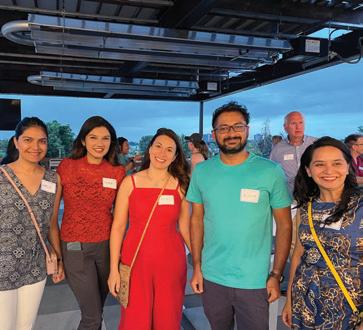
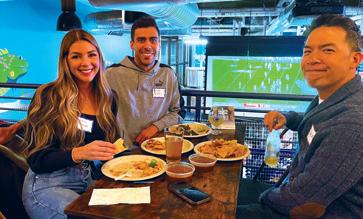
Dr. Bracken Bateman
Dr. Brad Berryhill
Dr. Mariah Boyd
Dr. Maharashi Desai
Dr. Roopa Gandhi
Dr. Joshua Goodman
Dr. Colin Hirsch
Dr. Michael Hoagburg
Dr. Megan Iritani
Dr. Roy Kaluzshner
Dr. Julia Plevnia
Dr. Jessica Riccobono

Dr. Hannah Slavin
Dr. Gary Van Genderen
2022 • VOLUME 28 • ISSUE 2 7
WELCOME NEW MEMBERS!
CDA & MDDS Celebrate Diversity Block Party – Edgewater Public Market
MDDS October Social – Cheluna Brewing Company
MDDS Shred Event Benefiting Colorado Orthodontic Foundation
COUNSELING



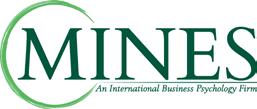

WELLNESS

Free and confidential counseling services for everyday life situations including stress, anxiety, depression, family situations, drug and alcohol abuse, relationships, death and grief, and work-related topics.
No matter your wellness goals, MINES can help. You have: • 4 professional wellness sessions with a personal coach. • 4 sessions of parental coaching and lactation consults. • 6 week Virtual Reality smoking cessation program. ONLINE Sign on to PersonalAdvantage to access: • Online Resource Library full of articles, assessments, training, and financial tools designed to beat stress and improve work/life balance. • eM Life mindfulness service for live sessions, community support, and expert instructors that can help you live a healthier, more balanced life. *Per Life Situation: A distinct, separate and new life event. A MINES case manager will review requests for additional sets of sessions. Continuation of counseling is not a separate, distinct and new life event. This guide is for informational purposes only. Call MINES for details. As an member of the
you and each member of your household have up to 5 counseling sessions per life situation.* Counseling is available by video, phone, text or face-to-face. ACCESS SERVICES: Call MINES at 800-873-7138 intake.minesandassociates.com Company Code: codental Your company code is used to register for online services as well as complete online requests for service. Log on today to access your services and mindfulness app. Free, Confidential Support 24/7 MINES and Associates | 800-873-7138 | intake.minesandassociates.com LEGAL AND FINANCIAL Practical legal and financial assistance that includes: • Free 30-minute consult per legal/financial matter. • 25% discount on select services after the initial consult. • Use your EAP sessions for financial/Medicare coaching. Live Well, Live Balanced, Live Life cdaonline.org/wellness
CDA,
I am MDDS: Artemis Khazaie, DDS

What influenced your decision to choose dentistry as a career?
From palatal expanders to braces and headgear, I spent a lot of time in the dental chair. The treatment process was always intriguing, and I often wondered what it would be like from the dentist’s perspective. Later, in college, I watched a periodontist place a bone graft. He walked me through the procedure and the final goal—implants to restore the patient’s function and esthetics. I was amazed; there was so much more to dentistry than I had imagined before. It was love at first sight. I found what I wanted to do. Dentistry is such an incredible mix of different trades. It really is true what they say, you’ll never get bored.
You recently had a baby boy. (Congrats!) How has motherhood changed your practice of dentistry? These last few months have been wild! But in the best way. While I have always strived to be understanding of my patients’ lives outside of the office, this experience has given me a different perspective and allowed me to be more empathetic of my patients’ wants and needs, especially when it comes to their time. It has also helped me set clear boundaries and priorities to create a good work-life balance.
What advice would you give to someone struggling to balance their career and family? Your and your family’s well-being comes first; otherwise, you won’t be able to focus on your patients. Be kind and patient with yourself as you learn to navigate these new waters. Starting a family is essentially starting a new career while simultaneously continuing the one you already have. And much like dentistry, you are constantly learning as you go, and you are constantly having to adjust. So, give yourself time and reasonable expectations while you are picking up these new skills.
Looking to the future, with respect to both your career and the profession, what are you most excited about? I’m excited about what I am seeing in organized dentistry. Being part of a community that bands together to make our voices heard has been very encouraging. We have many driven individuals in our field who strive to protect and better our profession and I have enjoyed and look forward to continuing to be part of the movement.
As a new Director on the MDDS Board, what changes are you hoping to see for dentistry in Denver? I would like to see our dentists have a greater voice when it comes to directing patient care and making decisions for the dental field. All too often have we seen measures implemented for our profession by non-dental individuals who do not fully understand the consequences of their regulations.
What would you be doing if you were not a dentist? I have many hobbies but none that I see myself turning into my full-time career. I’m still learning in this one and there are still many different directions I can take. I can’t think of anything else I would rather do at this point. Although, in a perfect world where I win the lotto every other drawing, I would definitely be globe-trotting. Traveling has always been a passion of mine and seeing the world would be a dream come true.
2022 • VOLUME 28 • ISSUE 2 9
MEMBER SPOTLIGHT
“Dentistry is such an incredible mix of different trades. It really is true what they say, you’ll never get bored.”
SPEAKER PREVIEW SERIES
DENVER, COLORADO • JAN 19-21, 2023
Each year in January, thousands of the dental profession’s best and brightest descend upon the Mile High City to attend the much-anticipated Rocky Mountain Dental Convention (RMDC). For 115 years, RMDC has offered the dental community the opportunity to connect with each other and attend education courses from nationally-recognized speakers. In the pages that follow a few of these speakers have provided a sneak peek on topics they will be presenting at the 2023 RMDC January 19-21. To learn more about RMDC including speakers, courses, participating vendors and new features, visit rmdconline.com.

Mouth Breathing: What Can Go Wrong?

Several things can go wrong with mouth breathing, leading to a cascade of health problems. The most obvious are dry mouth and lack of nasal filtration. Dryness leads to enlarged and inflamed tonsils and adenoids and an increased risk of upper respiratory tract infections. Dryness in the mouth and throat also leads to the collapse of the throat and the tongue falling into the throat which can both lead to obstructive sleep apnea.
Mouth breathing bypasses the nitric oxide advantage. Nitric oxide is released in the nasal cavity and inhaled into the lungs with nose breathing. Nitric oxide increases the efficiency of oxygen exchange, leading to as much as 18 percent more oxygen being absorbed. With less oxygen being delivered to the brain, muscles and all the cells of the body, the body does not function optimally. Sleep is often disturbed and of poor quality, leaving the mouth breather tired in the morning and feeling fatigued mid-afternoon. All signs of sleep deprivation.
Attention deficit hyperactivity disorder (ADHD) is also linked to mouth breathing, as the symptoms of sleep deprivation and ADHD are similar. With less oxygen absorbed and less reaching the brain, mouth breathers rarely achieve regenerative sleep. Despite many hours of sleep, they wake sleep deprived. Regenerative sleep is needed for the release of human growth hormone, necessary in children for bone and muscle growth. Without this, children may fail to thrive.
Mouth breathing changes the tongue rest position. Normal palatal growth is directed by the tongue’s gentle pressure against the palate during swallowing. Humans swallow at a minimum of 500 times each day, providing pressure, and stimulating DNA and stem cells located in the palatal suture
and within the periodontal ligaments around the teeth. When the tongue rests in the palate, the teeth erupt around the tongue, producing a healthy arch form. The lateral pressure from the tongue counters inward forces from the buccinator muscles. When the tongue is down and forward, the buccinator muscles continue to push inward unopposed, causing the upper arch to narrow. Anterior growth is also slowed, and the sinuses do not reach their full growth potential. Children who mouth breathe have an underdeveloped, narrow maxilla with a high vault. They develop a retrognathic mandible and generally have a long face.
Dr. Harold, an orthodontist, observed that most of his patients with crowded teeth were also mouth breathers. He designed a research study to test his theory. He surgically blocked the noses of monkeys with silicone plugs and implanted plastic blocks on the palates to force the tongue down and forward. The test monkeys all developed malocclusions from mouth breathing. Mouth-breathing-related problems of skeletal development will set children up for obstructive sleep apnea later in life.
It might seem logical that mouth breathing occurs because the nose is congested, but that is not always the case. There are two respiratory centers in the brain. One distinguishes between nose and mouth breathing and the other monitors carbon dioxide levels. Mouth breathers exhale carbon dioxide too quickly, and the respiratory center in the brain stimulates the goblet cells to produce mucous in the nose to slow breathing. This creates a cycle of mouth breathing triggering mucous formation, and nasal passage blocking, leading to more mouth breathing. Ironically, mouth breathing can cause nasal congestion leading to more mouth breathing.
MS. TRISHA O’HEHIR, MS, RDH
In some cases, mouth breathing is caused by ankyloglossia, or a tight lingual frenum keeping the tongue from effectively moving in the mouth to assist in chewing and swallowing and comfortably resting on the palate. Unless a frenectomy is done, mouth breathing will continue. Ankyloglossia can be diagnosed and treated in the first few days after birth. However, many cases are ignored until significant problems have developed. Early intervention can prevent subsequent problems.
These are just a few of the many problems associated with mouth breathing. Clinicians have an opportunity to check all patients, young and old to determine those who are mouth breathing.
Correcting mouth breathing and tongue positioning in children will prevent a cascade of problems both during childhood and growing into adults. The problems adults have because of mouth breathing can also be addressed, leading to better breathing, better sleep and a better life.
ABOUT THE AUTHOR
Ms. Trisha O'Hehir, MS, RDH together with UK-based RDH Timothy Ives recently authored the book LipZip, featuring stories of mouth breathers switching back to nose breathing and the impact it has on their lives. The book is available at www.lipzipbook.com
2022 • VOLUME 28 • ISSUE 2 11
ABOUT THE AUTHOR

Mr. Kevin Henry is co-founder of IgniteDA, a community designed to empower, enlighten and educate dental assistants. He has spent nearly two decades in dental journalism, working as editor-inchief for DrBicuspid.com, group editorial director for Dental Products Report and managing editor for Dental Economics.

MDDSDENTIST.COM 12
Sound Advice Every Dental Practice Should Hear... From a Baseball Usher.
MR. KEVIN HENRY
RMDC: SPEAKER PREVIEW SERIES
I recently was in St. Petersburg, Fla., for a dental meeting, and, while there, I took part in a bicycle tour that took us by Tropicana Field, the home of the Tampa Bay Rays. As we pedaled past, I had a flashback to being there for a baseball game in 2019.
The last time I was at “The Trop,” I was attending a Rays game as part of the media contingent covering the Colorado Rockies, who were on a road trip through Florida to play the Rays and Miami Marlins.
Being a part of the media team, I get to the game about five hours before the first pitch and am inside long before fans are allowed in. Of course, with this early access, I see a lot of “behind-thescenes” activity. The concession stands are getting their food deliveries and the souvenir stands are organizing and preparing for fans to look through their jerseys, shirts and hats for purchase. The restrooms are being mopped and the seats are being wiped down. Everyone is prepping ahead of time to make sure the fans have a great experience inside the ballpark.
On this day, I walked by the group of ushers and gate attendants who were getting their last-minute instructions from the group leader. One sentence he said caught my attention as I walked past…
“Remember, you’re here to make sure these fans enjoy their day today and come back tomorrow.” Now certainly working in a dental practice is different from working at Tropicana Field. However, the sentiment, when boiled down, can be very much the same.
As dental professionals, we know you don’t just work inside a practice. You work inside a small business. Part of your business’s success is making sure your customers turn into repeat customers and buy the services you offer. We know dental patients will often “price shop” for services and their loyalty to one practice (or one business) can often be lessened through the allure of the lower price.
What can overcome lower price? What can alleviate some of those wandering eyes from your patients? The feelings they get when they walk through your doors. Any customer in any field wants to feel like the most important person in the world when they interact with your business. That includes a dental practice…and involves every member of the practice.
I am a firm believer that dental assistants are often the biggest conduit between the patient and the practice. With that in mind, the assistant’s attitude every day plays such a key role in not only the overall atmosphere of the practice “behind the scenes” but also in the eyes of every customer with whom he or she interacts.
A friend of mine owns a practice in Tennessee. Near the team entrance at the back of his practice, he has a big luggage rack with a sign above it that reads, “Leave your baggage here.” He doesn’t want his team members carrying the baggage of the “outside world” into work with them on any day. He is a strong believer that whatever happens outside of work hours should have no effect on the attitude his employees bring into the practice (and the lives of their customers) on a daily basis.
So what’s your attitude every day when you walk through those doors? Are you making sure your patients feel important…or are you making them feel like numbers?
While your patients may not necessarily “enjoy” their trip to the dental practice, they can certainly enjoy the moments they have with you. Those moments can be the things they remember rather than the procedure itself. Positive interactions can ensure that the patient comes back for treatment and regular visits…and those moments can also help the foundation for the success for the practice.
I’m a firm believer that, when a business succeeds, its employees should succeed as well. However, everyone must do what they can to ensure success.
2022 • VOLUME 28 • ISSUE 2 13
“Remember, you’re here to make sure these fans enjoy their day today and come back tomorrow.”
Cyber Threats Continue to Impact the Dental Community
The dental community continues to see triple extortion methods deployed by many hacking groups. These occur when hacking groups steal all the data from a victim, publish the data on the Dark Web and contact the practice’s employees and patients of record. This has become a highly effective method because it almost guarantees a dental practice will pay the ransom to prevent the leaking of confidential information. Hacking groups create “data leak sites” on the Dark Web where they showcase some or all the data stolen. These sites often include highly confidential information, including patient health history, lab reports, pathology, driver’s licenses, insurance cards, HR files, banking, and financial information. If payment is not made, hackers will begin selling or auctioning data on the Dark Web.
solutions, the feeling of “it won’t happen to me”, and promises made by IT companies are the primary causes of these ransomware attacks.
ABOUT THE AUTHOR
Mr. Gary Salman is the CEO of Black Talon Security and is dedicated to data security and understanding the latest trends in the industry, particularly as they relate to the dental industry. He has decades of experience in software development and computer IT and developed one of the very first Cloudbased healthcare systems.

The legal and public relations nightmare associated with this type of event is significant. The cost and reputation damage to a dental practice can be severe. In almost all extortion cases, legal counsel will recommend payment of the ransom regardless of the availability of recoverable backups. Ransom demands and expenses associated with cyberattacks against dental practices continue to skyrocket. Practices can experience practice interruptions in excess of ten days and sixfigure expenses.
Many dental practices don’t understand the value of cybersecurity until they become a victim of an attack or have a close friend or colleague that has been extorted for hundreds of thousands of dollars. The lack of advanced cybersecurity
How do attacks against dental practices typically occur and why are they on the rise? Most practices that have been victims of an attack believed their IT company had them properly protected using firewalls, anti-virus software and backups. Unfortunately, this type of protection is now considered basic security and will not stop many types of attacks. Hackers will typically breach a network in one of two ways. The first is known as social engineering, where hackers trick employees into clicking on a link, opening an attachment, or giving up their credentials. This type of attack is often highly effective because the computer may not be able to defend against it since the employee/doctor initiated the action. Preventing this type of attack is relatively easy through cybersecurity awareness training. This training is required under HIPAA and will help to identify email and web threats and take corrective action to prevent falling victim. This training must be ongoing and should be conducted by a cybersecurity company that has a training platform designed to educate users on the various threats and methodologies hackers are using.
The second way hackers will breach networks is by exploiting known vulnerabilities (“open doors and windows on your network”) on a firewall, computers and other devices. They use sophisticated tools to scan these devices that enable them to exploit the device. Hackers often
MDDSDENTIST.COM 14
RMDC: SPEAKER PREVIEW SERIES
MR. GARY SALMAN
then use the devices to gain access to dental office network where they can persist for weeks prior to an attack being executed. During this time, they gather intelligence on everything you do and everything you access on your network. For instance, they will watch how and where you back up, the type of anti-virus software you use, the Cloud systems you access, the applications you use and what type of business you are. This intelligence-gathering exercise provides hackers with leverage when launching the final phase of the attack, which is the execution of their ransomware code. Only at this point will you and your IT company realize you have been attacked. Once all your computers are encrypted with ransomware, the hacker will leave a ransom note on some, or all, of the computers. This note typically indicates how to contact them and it may also include information about the amount of money they are demanding.
To address vulnerabilities on the firewall and network, a practice must implement real-time vulnerability management and penetration testing solutions immediately. These solutions constantly monitor, test, and evaluate the vulnerabilities on the network so they can be addressed and fixed. Since hackers exploit vulnerabilities, the elimination of high-risk vulnerabilities reduces the likelihood of an event.
New vulnerabilities are being discovered every day on computers, firewalls and devices. Without an effective cybersecurity program in place, you could become the next victim of a ransomware attack.

1
My firewall and anti-virus software will protect me.
My backups will prevent me from having to pay a ransom/ extortion demand.
I am in the Cloud, so I have nothing to worry about.
My IT company has me protected, so I have nothing to fear.
Hackers won’t find me, there are too many “big fish” out there.
Even if I get hit, I will be able to get back up and running quickly.
The FBI has tools to decrypt my data.
I don’t have any data that hackers care about.
I have insurance, so I am covered.
I am just a dental practice, not a hospital, so security does not matter to me.
2022 • VOLUME 28 • ISSUE 2 15
Let’s address the common misperceptions dental practices make related to cybersecurity:
2 3 4 5 6 7 8 9 10
How to Build a Ransomware Resilient Practice:
Have a comprehensive onsite and offsite backup solution that includes a disconnected backup.
Implement real-time vulnerability management technology to identify and address vulnerabilities on devices within your office. Make sure the medium to high-risk vulnerabilities are addressed on an ongoing basis.
Have an external penetration test done (on at least an annual basis) to identify entry points into your network that hackers will exploit.
Utilize a cybersecurity awareness training platform to empower and educate your doctors and team on the various threats.
Test employees to determine the effectiveness of the cybersecurity awareness training by utilizing a simulated phishing platform that sends emails that appear to be malicious.
Engage with a dedicated cybersecurity company to perform a security risk assessment to help the practice understand where they have operational risk. A risk assessment is required under HIPAA.
Implement Artificial Intelligence (AI) anti-virus and threat-hunting software known as Extended Detection and Response (XDR). XDR can replace your traditional, outdated anti-virus software.

Utilize an independent third party, not your IT company, to perform the above-mentioned tasks. It is critical your IT vendor does not test and evaluate their own security measures. You don’t want “the fox guarding the hen house.”
Implement a password management tool that creates unique and strong passwords for every website and application you utilize.
Implement Multi-Factor Authentication (MFA) for financial institutions, credit cards, email systems, insurance carriers, software applications (such as practice management) and anywhere that supports it.
Cybersecurity is a rapidly changing landscape with new threats and hacking groups appearing almost weekly. An off-the-shelf solution is not the answer. You need a multi-layered solution by implementing the above-referenced ideas and technologies to give your practice a fighting chance against these highly sophisticated adversaries.
MDDSDENTIST.COM 16
1 2 3 4 5
7 8 9 10
6
CONTINUED


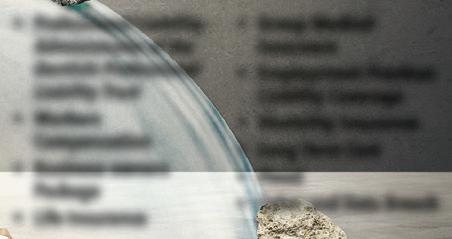

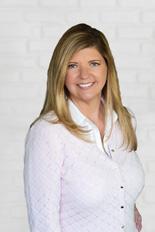

2022 • VOLUME 28 • ISSUE 2 17 7807 East Peakview Avenue, Suite 350 Centennial, CO 80111 https://colorado.berkleyrisk.com Phone: (303) 357-2600 Toll Free: (877) 502-0100 denver@berkleyrisk.com info@ctc-associates.com | 303-795-8800 | www.ctc-associates.com THINKING ABOUT SELLING YOUR DENTAL PRACTICE? Complimentary Consultation (303) 795-8800 Larry Chatterley Marie Chatterley Appraisals • Practice Sales • Partnerships • Associateships Selecting someone to assist with the transition from a dental practice of 48 years is a difficult decision. I can't think of a more capable person than Marie Chatterley to handle this process. It was reassuring to me that she had the answers to virtually all my concerns. Her experience made me completely comfortable with the process. I will be forever indebted to her Ivan Naiman D.D.S CTC Associates can guide you through the transition process to ensure everything goes smoothly with the legacy you have built. info@ctc-associates.com New Listings: www.ctc-associates.com/dental-practices-for-sale
It’s Time to Get Comfortable Discussing HPV

If dental professionals aren’t willing to educate the public, who will?
MS. SUSAN COTTEN, BSDH, RDH, OMT

› This article was originally published in RDH magazine and is reprinted with permission. Subscribe at rdhmag.com/subscribe.
ABOUT THE AUTHOR
Ms. Susan Cotten, BSDH, RDH, OMT is the founder and CEO of Oral Cancer Consulting. She is a consultant and Dental Workgroup Lead for HPV Free Colorado, board member and oral cancer screening coordinator for Colorado Mission of Mercy and Regional Coordinator and RDH Advisory Board member for The Oral Cancer Foundation.
MDDSDENTIST.COM 18
RMDC: SPEAKER PREVIEW SERIES
The day started out like a normal Wednesday, work in the morning and then a trip to Trader Joe’s. I almost didn’t go; my to-do list was long, and the 36-mile round trip would take time away from checking things off that list, but the little voice inside my head was telling me to go.
There’s butter lettuce, and then there’s Trader Joe’s butter lettuce, so it’s always the first thing on my list. Moving through the aisles, I filled my basket with other favorites. With a full grocery cart, I headed to the shortest checkout line. Watching the two young men who were checking and bagging the customers ahead of me was a treat; they were engaging and obviously enjoying their day at work. As the customers ahead of me left, the checkers turned to me and said, “How are you today? Thank you for coming in!” After exchanging pleasantries, the checker asked what I do for work. I told him I’m a dental hygienist, and I speak and educate on oral cancer. With that, he stopped scanning my groceries and said, “That’s really specific; I’ve never heard of that. I’m glad neither of us smokes; we won’t ever get that cancer. Do you have any fun or interesting facts or information to share with us about oral cancer?”
FROM BUTTER LETTUCE TO ORAL SEX
Now I knew why that little voice was telling me to go to Trader Joe’s that day. For reasons unknown to me, I was supposed to share information with these young men. It was the perfect scenario: two
young, nonsmoking, white males who believe they are not at risk for oral cancer asking me to share information with them. They didn’t know my passion for this, and sure didn’t know what was about to be shared! I said, “I would love to share! Thank you for asking. What we now know is that the human papillomavirus (HPV) is the main cause of oropharyngeal cancer. It’s cancer in the back of the mouth, typically in the tonsils and back part of the tongue, and those most at risk are white, nonsmoking males. We also know HPV now causes more of this cancer than it does cervical cancer.”1
By this time, the young man bagging my groceries had stopped bagging. Both were intent on knowing more and were very surprised to learn about this cancer and to find out they could be at risk. They said they had heard about HPV and cervical cancer but not about it causing cancer in the mouth. Both continued to ask questions, wanting more information, including how HPV gets in the mouth, and specifically what they can do to help reduce their chance of getting this cancer. I shared with them that HPV is transmitted through skin-to-skin contact, orally through oral sex, and possibly through open mouth, deep, aggressive kissing. I recommended protection during oral sex just as with conventional sex. We also discussed the HPV vaccine, which they both had received; however, they didn’t know much about it and didn’t know
it could aid in protecting them from persistent HPV infections, which could possibly result in cancer. It wasn’t an awkward conversation; they were truly curious and wanted more information, and I was thrilled to get to share this information with them. They both said they go to the dentist regularly.
MANY OPPORTUNITIES TO EDUCATE
In the last 12 years of being immersed in raising awareness about HPV and oral and oropharyngeal cancer, I wish I’d kept track of the number of conversations like this that have occurred, inside and outside of the operatory. There are simply too many to recall.
While writing this article, a phone conversation with a business colleague in his 60s about my work in oral cancer prompted him to inquire further about HPV and how it gets in the mouth. He thought he knew but wanted a little more clarification. And just last week while listening to a radio program with a respected physician as the guest, the topic of HPV was brought up. The physician mentioned HPV and its association with cervical cancer and mentioned the HPV vaccine. However, the vaccine was only referenced in relation to preventing cervical cancers, not head and neck cancers or other cancers associated with persistent HPV infections. It was a missed opportunity for a large listening audience to learn more about other HPV cancers.
2022 • VOLUME 28 • ISSUE 2 19
“What we now know is that the human papillomavirus (HPV) is the main cause of oropharyngeal cancer.”
I believe people inquire further about oral cancer and HPV because they don’t hear much about it in the media, or even in their medical and dental offices. The messaging for cancers such as breast cancer, colon cancer, and cervical cancer is intentional in the media and respective medical offices, but not so much for oral cancer. Dentistry needs to be more intentional about educating and raising awareness about HPV and oral and oropharyngeal cancers.
What we now know is this: the number of HPVassociated head and neck cancers has surpassed the number of HPV-associated cervical cancers. Unfortunately, the messaging about HPV is still focused on cervical cancer.2
LESSONS LEARNED
I’ve learned a few things during my years of work in raising awareness about HPV and oral cancer through conversations with patients and the public.
First, if the public is going to be educated and aware of HPV and its association with head and neck/oropharyngeal cancer, it will come from dental professionals. In fact, it is our ethical responsibility to share this information about “our cancer.” If they don’t hear it from us, where else? It’s okay, even essential, to talk about the transmission of HPV via oral sex, its association with head and neck cancers, and the availability of the HPV vaccine that can aid in reducing persistent HPV infections associated not only with
oropharyngeal and cervical cancer but also anal, penile, vaginal and vulvar cancers.
Society is open to hearing this information. The public wants to know how to help prevent cancers and recognize the signs and symptoms for the earliest detection. Most are still of the belief that tobacco is the only risk factor for oral and head and neck cancers. Patients and the public deserve to know this information so they can make informed decisions for themselves about their oral health. This does not need to be a knee-to-knee conversation; the optimal time to share information is during the extraoral and intraoral evaluation (EOIO). Information can also be shared in newsletters the dental office sends to patients, in social media posts, and in brochures and flyers in the office.
The public and some medical and dental professionals are misinformed about HPV. It is still the common belief that HPV is most associated with causing cervical cancer and the purpose of the HPV vaccine is to help prevent cervical cancers in females. Statistics released by the US Cancer Statistics Data Briefs, No. 26 in December 2021 based on data from 2014–2018 reveals that there are approximately 10,600 cases of oropharyngeal cancer in males and 1,800 cases of oropharyngeal cancer in females each year that are attributable to HPV types 16 and 18.2 The US FDA added prevention of oropharyngeal cancer to the HPV vaccine’s indication: “The human papillomavirus (HPV) recombinant 9-valent
vaccine (Gardasil 9) received FDA approval for an expanded indication to include the prevention of oropharyngeal and other head and neck cancers caused by HPV types 16, 18, 31, 33, 45, 52 and 58.”3
People are listening! The public and our patients are listening, and they are looking for healthcare professionals to share our expertise and have courageous conversations about critical health information. When I first started sharing information about HPV with my patients 12 years ago, I would bring it up when I was palpating the occipital nodes behind them so I wouldn’t have to look at them. I was very uncomfortable with this conversation at first; however, I knew it was vital information to my patients’ oral and systemic health and it needed to be shared. During your clinical appointments, find the time and place that is most comfortable for you.
Our job doesn’t end when we take off our scrubs. Be open to spontaneous conversations regarding essential information about HPV and oral cancer. In a recent conversation with Katrina Sanders, MEd, she eloquently said, “Irene Newman, the first dental hygienist—her job was not to improve production and close more cases. Her job was to be a patient advocate and educate the community.” I’m encouraging you to be like Irene Newman: be an advocate and educate the community, share the tremendous amount of knowledge, expertise, and lifesaving information you possess about “our cancer,” not only with patients but the general public as well.
MDDSDENTIST.COM 20
RMDC: SPEAKER PREVIEW SERIES
CONTINUED
“The number of HPV-associated head and neck cancers has surpassed the number of HPV-associated cervical cancers.”
CALL TO ACTION
If you are uncomfortable or lack confidence in sharing information about HPV or feel you need more knowledge, find a mentor, do some research, and be your own advocate to gain the knowledge you need. Recruit your entire dental team or dental service organization (DSO) to establish a positive, informative culture around HPV and oral cancer. Make it your mission to save lives through sharing critical information with patients and the public. Perform a thorough EOIO evaluation on every patient, tell them what you’re doing, and use that time to efficiently share information and raise awareness about what we now know concerning HPV and oral cancer.
REFERENCES
1. HPV/oral cancer facts. The Oral Cancer Foundation. https:// oralcancerfoundation.org/ understanding/hpv/hpv-oral-cancer-facts/
2. Cancers associated with human papillomavirus, United States—2014–2018. U.S. Cancer Statistics Data Briefs, No. 26. Centers for Disease Control and Prevention. December 2021. https://www.cdc.gov/cancer/uscs/about/databriefs/no26-hpv-assoccancers- UnitedStates-2014-2018.htm
3. FDA adds prevention of oropharyngeal cancer to HPV vaccine’s indication. AAP News. May 2021. https://www.fda.gov/media/150779/download
–• Transition Planning • Dental Building Sales • Buy Ins/Buy Outs Pete Mirabito DDS, FAGD • Jed Esposito MBA, CVA ADS Precise Transitions
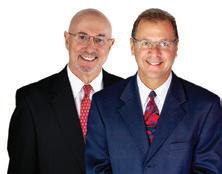
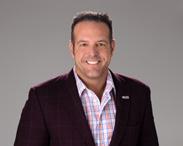
– Portfolio loans for unique situations – Primary residence, second homes and investment property financing
– KNOWLEDGE EXPERIENCE TRUST CREDENTIALS


Financing for a wide price range of homes
Fixed- and adjustable-rate mortgages – Lender-paid mortgage insurance programs available DENTAL PRACTICE BROKERS
Beaux Selznic
Mortgage Loan Office 3 03- 39 4- 7 075 o ffice 3 0 3 -588 -5101 c e beaux.selznick@usbank.co N ML S # 59 5 3 2 3
If you’re considering buying a higher-cost or luxury home, your best mortgage option could be a jumbo loan. – Low down payment options • Practice SalesSince 1986 • Practice Appraisals • Partnerships
2022 • VOLUME 28 • ISSUE 2 21
Jumbo mortgage options for your higher-limit needs redit ap proval an d p rogram g uidelines. N ot all loan p rograms are available in all states for all loan amounts. Interest rates and program terms are subject to change without notice. Visit usbank.com to learn more about U.S. Bank products and services. Mortgage, home equity and credit products are offered by U.S. Bank National Association. Deposit products are offered by U.S. Bank National Association. Member FDIC. ©2022 U.S. Bank 780203c 6/22 Call us - 303.759.8425 Visit us - adsprecise.com All ADS companies are independently owned and operated
Loan ap p roval is subject to c
Treating Adults With Special Health Care Needs
SHEILA STILLE, DDS; KAREN FOSTER, DDS; AND MS. JOANN LECLAIRE, RDH, MS
In Colorado, 20% of adults have a disability.1
Of the 20%, cognition, (intellectually and developmentally disabled adults), make up 8% of our population.1
Dentistry is one of the most difficult healthcare services for the disability population to access.2
“Disability” is defined as any physical, developmental, sensory, behavioral, cognitive, or emotional impairment or limiting condition that requires medical management, health care intervention, and/or use of specialized services or programs.3 Developmental disabilities originate before the age of 18 and are expected to continue indefinitely. Typically, patients in this population have multiple interacting medical, cognitive and/or behavioral problems, are on multiple medications, are under the care of multiple healthcare providers and receive community services.
This group of individuals has difficulty accessing dental treatment in a routine manner. Reasons include the inability to identify dentists comfortable treating this population, the need for appointment time flexibility and a lack of awareness among caregivers about which dentists to contact. This can cause serious problems in maintaining dental health. Dental urgencies and
emergencies often result in a trip to the local emergency room or urgent care. Unfortunately, dentists do not play a prominent role in these facilities.
Every dentist in Colorado should be able to treat this patient population. With the following suggestions, it can be a fun and rewarding experience for the dentist and their team.
INITIAL CONTACT
Prior to any appointment, dentists should review the patient’s medical history and clarify their disability, medications, behavioral issues and past dental experiences. This will provide the opportunity to prepare for the initial visit. It can be helpful for practices to forward new patient materials to the patient or caregiver in advance of the appointment. Then upon the return of the new patient information, a practice team member should call the caregiver to review the information. With this exchange of information, you are also
able to identify the patient’s legal guardian and/ or medical proxy. Consider sending the family a “Social Story” of the office. This consists of photographs of the outside of the office, front desk and waiting room, operatories, dentists and team. Patients can come in for a tour as their first visit to the office. Team members show them around, have them meet the hygienist and “see” the mirror, explorer, prophy cup, and end by giving them a toothbrush or sticker. This visit can be about 15 minutes. It is important all team members are involved in helping the patient adjust to the office. When the actual exam and prophy appointment comes around, the patient is more prepared and comfortable.
YOUR FACILITY
One concern for many dental providers is, “do I have the correct space to treat this patient population?” There are several issues to consider. Mobility: does the patient have a walker or wheelchair? If your office is ADA-compliant,
MDDSDENTIST.COM 22 CLINICAL
mobility should not be an issue. Sensory Integration: It is true many special needs patients have sensitivities to noises, lighting, tastes, textures, smells and touch. It is preferable to have a closed room or a room that is out of the way, so it is easier to control some of these factors. You can control the number of people in the room, (e.g., one provider and one caregiver) to limit distractions. Some patients enjoy music. Putting on their favorite artist can be a great distraction, while other patients may find it annoying. Watching a movie on an iPad may help as well.
Consider scheduling the patient at a time when the office has fewer patients. This allows for fewer distractions and less anxiety for the special need patient, as well as the treating provider and team. Another effective technique is a weighted blanket or laying the lead apron on top of the patient. This “pressure” has been known to provide comfort to the patient and calm anxiety while in the dental chair.
Lighting can be another negative stimulation in this patient population. You can dim the lights in the room and use loupes only. You can also use sunglasses to block the light. Who wouldn’t want to wear cool sunglasses?
Other sensory issues are taste, texture and smell. Extremes in taste, texture and smell can cause the patient to exhibit behavioral issues. For instance, mint and cinnamon can cause an adverse reaction, where the patient may try to leave or otherwise act out. Try milder flavors or no flavor, like melon fluoride varnish, bubblegum or vanilla toothpaste and prophy paste that is fruit flavor. The grit of the prophy paste may also be too much for some patients. Consider asking the caregiver to bring the patient’s own toothpaste with them to the appointment. If you prescribe fluoride toothpaste for the patient to use at home, remember to make sure the flavor is mild so the patient will use it. Try to avoid strong smells in the room, such as perfumes or air fresheners. This too can cause the patient to react poorly. Remember that many patients have special diets or allergies. It is best to make sure the products that you use for this patient population are both gluten-free and dye free.
APPOINTMENT TIMING
Ask the caregiver for advice as to the best time of day for the patient to be treated. Often the patient needs significant help with their Activities of Daily Living, (ADLs), such as getting up, bathing and dressing, having breakfast, and taking multiple medications, so an 8:00am appointment could be
challenging. On the other end of the spectrum, a late afternoon appointment could be difficult because the patient has had a full day, is very tired and does not have the resources to cope with a new environment. Be sure to ask the caregiver what the best time is for each patient.
Another issue is time in the operatory. Many special needs patients cannot sit for a usual 60-minute appointment. You may be lucky to perform your treatment in 30 minutes! You need to be efficient and prioritize areas to concentrate on, such as the lower anterior teeth this time and concentrate on the posterior teeth next time.
For your safety and the safety of the patient, utilize tools to help you be efficient. One such tool is mouth props. They come in many types: disposable, rubber with handles on the outside and metal molt props. The use of a restraint board (papoose board), pillows and suction toothbrushes can also be helpful. It is never a bad idea to begin with a toothbrush to debride the patient’s mouth to get a better view. The patient is used to seeing a toothbrush and this familiarity may allow you access to their mouth.
Behavioral techniques, such as show-tell-do; counting, rewards, videos, singing, and fidget
2022 • VOLUME 28 • ISSUE 2 23
“Every dentist in Colorado should be able to treat this patient population. It can be a fun and rewarding experience for the dentist and their team.”
toys can distract the patient enough to be able to perform your dentistry. It helps the patient know what’s next and how long it will take. Please don’t set your expectations high for initial visits. Sometimes, just performing a toothbrush prophy is a win! You may need additional appointments,
but this also allows you to desensitize the patient to you and your office. You will surprise yourself with how rewarding it can be to treat the special needs adult population. Just a little compassion and empathy will go a long way in helping these patients and their families. Sometimes you will
find it challenging to treat certain patients and in those cases referral to another practice or center is appropriate. This is not a failure.
Just keep trying and most of all— Have Fun!
REFERENCES
1. https://www.cdc.gov/ncbddd/disabilityandhealth/impacts/colorado.html
2. Ervin DA, Hennen B, Merrick J, Morad M. Healthcare for persons with intellectual and developmental disability in the community. Front Public Health. 2014 Jul 15;2:83. doi: 10.3389/fpubh.2014.00083. PMID: 25077139; PMCID: PMC4098023.
3. Merriam-Webster.com, online dictionary
ADDITIONAL RESOURCES
https://decisionsindentistry.com/article/dental-care-patients-special-needs/ https://www.ada.org/resources/practice/practice-management/specialconsiderations

https://www.dentalhealth.org/dental-care-for-people-with-special-needs https://www.aapd.org/media/Policies_Guidelines/BP_SHCN.pdf
https://dimensionsofdentalhygiene.com/article/caring-%E2%80%A8forpatients-with-special-needs/ https://dimensionsofdentalhygiene.com/5-strategies-when-caring-forpatients-with-special-needs/
ABOUT THE AUTHORS
Dr. Sheila Stille graduated from the University of Connecticut School of Dental Medicine. She then completed her residency at UCONN. She works at the University of Colorado School of Dental Medicine as the General Practice Residency Program Director. She is excited to share her love for her special needs patients with anyone who will listen.
Dr. Karen Foster received her DDS from Baylor College of Dentistry and completed a pediatric residency at the University of Texas-Houston Dental Branch. Dr. Foster is an associate professor at the University of Colorado School of Dental Medicine in the Special Care Clinic. She is also Vice President of the Metro Denver Dental Society and ADA 14th District Vice Caucus Chair for 2023. In addition, she serves on several MDDS committees and served on the Colorado Dental Association executive committee from 2014-2019.
Ms. Joann LeClaire, RDH, MS received her Bachelor of Science degree in Dental Hygiene from the University of Colorado School of Dentistry and her Master of Science in Dental Public Health from Boston University. She received a certificate from the University of Washington School of Dentistry in Dental Education in the Care of Persons with Disabilities. After working as a professor in the Department of Community Dentistry and Population Health at CUSDM for 30 years she recently retired and is working as a dental hygiene instructor for Concorde Career Colleges.
MDDSDENTIST.COM 24
CONTINUED







2022 • VOLUME 28 • ISSUE 2 25 Schedule your confidential consultation today at www.sastransitions.com Susan A. Spear We Can Sell and Transition Your Practice Without “Selling Out” Your Legacy! LICENSED BROKER / BUSINESS INTERMEDIARY (303) 973-2147 susan@sastransitions.com www.sastransitions.com
MDDS CE & EVENT CALENDAR
JANUARY 19 – 21, 2023
Rocky Mountain Dental Convention
Various Speakers
Colorado Convention Center 700 14th St Denver, CO 80202
FEBRUARY 8
CPR & AED Training
CPR Choice
Mountain West Dental Institute 925 Lincoln St Unit B Denver, CO 80203
6:00pm – 8:30pm



FEBRUARY 23
MDDS February Social
Moo Bar at Denver Milk Market
1800 Wazee St, #100 Denver, CO 80202
6:30pm – 8:30pm
MARCH 4
CDA & MDDS Women in Dentistry
Upstairs Circus DTC 5370 Greenwood Plaza Blvd, #106 Greenwood Village, CO 11:00am – 2:00pm
MARCH 10
Cracking Periodontal Codes with Class: Diagnostic Decisions
Ms. Katrina Sanders
Mountain West Dental Institute 925 Lincoln St Unit B Denver, CO 80203 8:00am – 12:00pm
APRIL 11
CPR & AED Training
CPR Choice
Mountain West Dental Institute 925 Lincoln St Unit B Denver, CO 80203 6:00pm – 8:30pm
APRIL 21
Botulinum Toxins (Xeomin, Dysport, Botox) and Dermal Fillers Training, Level 1
American Academy of Facial Esthetics
Mountain West Dental Institute 925 Lincoln St Unit B Denver, CO 80203 8:00am – 5:00pm
APRIL 22
Frontline TMJ & Facial Pain Therapy, Level 1
American Academy of Facial Esthetics
Mountain West Dental Institute
925 Lincoln St Unit B Denver, CO 80203
8:00am – 12:00pm
MAY 5
Laser Bacterial Reduction
Ms. Joy Raskie
Mountain West Dental Institute
925 Lincoln St Unit B Denver, CO 80203
8:00am – 12:00pm

JUNE 9
Nitrous Oxide/Oxygen Administration Training
Dr. Jeffrey Young
Mountain West Dental Institute 925 Lincoln St Unit B Denver, CO 80203 8:00am – 4:00pm
FOLLOW MDDS ON SOCIAL!
Improve Patient Care
By partnering with DenteVita and the Practice of Dr. Aldo Leopardi, Prosthodontist, you can improve your patient care without adding overhead expense. You can trust that you’ll receive the impeccable service you would expect from a seasoned specialist like Dr. Leopardi.
Together, we will work with you to provide the highest level of individualized care. Consider Dr. Leopardi’s expertise as an extension of your professional practice. The level of experience and precision that his Practice offers makes it easy for you to refer your patients with complete confidence.
About Dr. Aldo Leopardi
Dr. Leopardi is the founder of DenteVita Prosthodontics. His focus is to provide functionally driven aesthetic solutions to patients requiring tooth borne fixed, removable, aesthetic and implant supported dentistry. With over 30 years of experience, from single tooth to complete rehabilitation, you can be assured that your patients are in the care of a skilled professional.

7400 East Crestline Circle, Suite 235 Greenwood Village, Colorado 80111 P. 720.488.7677 // F. 720.488.7717
Visit our website: www.dentevita.com
Our goal at DenteVita is to do everything possible to build your confidence and exceed your expectations. Call our office at 720.488.7677 to speak to Dr. Leopardi and find out how we can build a successful partnership.
Don’t forget to ask about our referral packet!
Life is better with DenteVita
MDDSDENTIST.COM
= HANDS-ON EVENT
CLASSIFIEDS
HIRING
Full-Time Endodontist: Evolution Endodontics and Periodontics, Castle Rock, CO, Compensation Percentage: 40-45% Collections (Performancebased). Please reply with a current resume, cover letter and list of three dental references, including one from your former endodontic program director or a practicing endodontist who is familiar with your clinical skills. All applicant materials can be emailed to our Talent Acquisition Specialist, Barb Pemble, at bpemble@reoconsulting.org
FOR SALE
General Dental Practice in Denver, CO (Listing # CO 2213). Collections of $190K. This could be a Chart Sale or Practice sale. The practice occupies 1,700 square feet and consists of 4 operatories + 2 additional Ops opportunities. Price $95,000. For more info email: jed@adsprecise.com or call 303-875-8500
General Dental Practice in Golden, CO: Collecting $1.58M. (Listing # CO 2210). Loyal Team willing to stay on with practice transition!! 6 opts, 2,000 square feet, private business offices, CBCT, New Technology CEREC, Digital Scanners, Tissue Lasers, and 3D Printer, Management centers for easy access, and much more! High visibility in a well-established strip mall business center. Good lease and longevity. The owner is retiring but willing to help with a smooth transition. Motivated Seller. For more info email: jed@adsprecise.com or call 303-759-8425
General Dental Practice in Downtown Denver, CO (Listing # CO 2207). Great location! Collections of $385K. The practice occupies 1,287 square feet and consists of 3 operatories. The office also includes a reception area, business area, private doctor’s office, lab, sterilization area, staff lounge and two bathrooms. It is equipped with 10 air driven high-speed handpieces, 1 Dexis sensor digital x-ray, 1 digital pano x-ray, vacuum pump & compressor, and 6 networked Windows computer workstations. Price $260,555. For more info email: jed@adsprecise.com or call 303-759-8425
GP for Sale: Northeastern CO (Listing # CO 1735). 4 Ops, approx. $900K in collections, Stand-alone bldg. sold w/practice. Dr. retiring. For more information, please contact us at jed@ adsprecise.com or call 303.759.8425. For more listings visit www.adsprecise.com
Part-Time Leading to Full-Time Associate Periodontist: Evolution Endodontics and Periodontics, Castle Rock, CO, Compensation Percentage: 34-36% Collections (Performance-based). Please reply with a current resume, cover letter and list of three dental references, including one from your former endodontic program director or a practicing endodontist who is familiar with your clinical skills. All applicant materials can be emailed to our Talent Acquisition Specialist, Barb Pemble, at bpemble@reoconsulting.org
Great opportunity to own Established General Dental Practice & Building in South Colorado Springs / Pueblo Area (Listing # CO2127). Collections $325K, 3 OPS with opportunity for 2 additional OPS. 2,300 sq. ft.. Located in a lovely bedroom community setting and operating on a short work week. Patient draw is from the front range and central mountains. Practice Price is $199K + Dental Office Building $400K. Dr Retiring. For more information please call 303.759.8425 or email jed@adsprecise.com
General Dental Practice in Southwest Denver, CO (Listing # CO 2201). Great location! Collections of $1,1M Practice occupies 1,550 square feet and consists of 5 fully equipped operatories. Potential for an additional 1,600 sq ft adjacent to this office. Dr relocating. Price $650,000. For more info email: jed@adsprecise.com or call 303-759-8425. General Dental Practice for Sale in Colorado Springs (CO 2124). Great opportunity to acquire and established a well-established practice in a great location. Collections $450K, 3 OPS. Dr. Retiring. Practice Building is also for sale with practice. For more information, please call 303.759.8425 or email jed@adsprecise.com
Highly desirable Boulder County, CO (Listing # CO 2122). Annual Collections $1.7M, 3 ops, Professional building, 1,800 sq. ft., Sales price $895k. Great Opportunity & Price! Established customer base and much less expensive than a start up. Office Condo also for sale. Excellent location, Dr. retiring. ADS Precise Transitions, 303-759-8425 or jed@adsprecise.com
Perio practice for Sale: North of Denver Metro area (Listing # CO 1909). Annual Revenues $500K, 3 Ops, 1,323 square feet. For more information, please contact jed@adsprecise.com or call 303.759.8425. For more listings visit www.adsprecise.com
General Practice for sale in North Central Colorado (Listing # CO 2121). Occupies 1,100 square feet and consists of 3 fully equipped operatories. Doctor works two and half days a week. The office also includes a reception area, lab, sterilization area, staff lounge and a bathroom. The practice produces $510K in collections. For info contact jed@adsprecise.com or call 303.759.8425
Great Opportunity: 30+ year established orthodontic practice for sale in excellent location of highly desirable Boulder County, Colorado (Listing # CO 2116). Collections of $400K. Sales price $249K. Tech is up to date including an iTero Element imaging system. Located in a Dr. owned 4-plex & occupies 1,400sqft with 4 chairs. Room for expansion. Doctor is retiring. For information email: jed@adsprecise.com or call 303-759-8425
GP for Sale: Colo Springs (Listing # CO 2010). Don’t miss out on this well-established general practice that is well postured for growth. Located in a highly desirable area of Colorado Springs. Current collections are $319K with 3 OPS and 1,682 sq ft. Doctor works 3 days a week/ 20hrs. Lots of room for Growth! Very attractive lease terms. Sales price $199K. Doctor is retiring. For more listings visit www.adsprecise.com
General Dental Practice for Sale in Boulder, CO (Listing # CO 2111). Collections of $650K. Practice occupies 1,800 square feet and consists of 3 fully equipped operatories with room to expand. Dr retiring. For information email: jed@adsprecise.com or call 303-759-8425. For more listings visit www.adsprecise.com
2022 • VOLUME 28 • ISSUE 2 27
TO CARE INITIATIVE
SAVE A TOOTH ACCESS
Be an ally for someone suffering from tooth pain and contemplating pulling a tooth because of the cost of a root canal. We are offering root canal treatment for the price of an extraction ($102).
It’s a benefit for everyone. For your patients, they are saving their natural teeth while relieving pain. For you, it is optimizing treatment planning and timely intervention to address patients’ oral health needs and goals. Dentists looking to refer patients to this program can do so by emailing: sdmreferral@ucdenver.edu with promo code: ENDO21 .
DENTAL.CUANSCHUTZ.EDU/SAVEATOOTH
























































